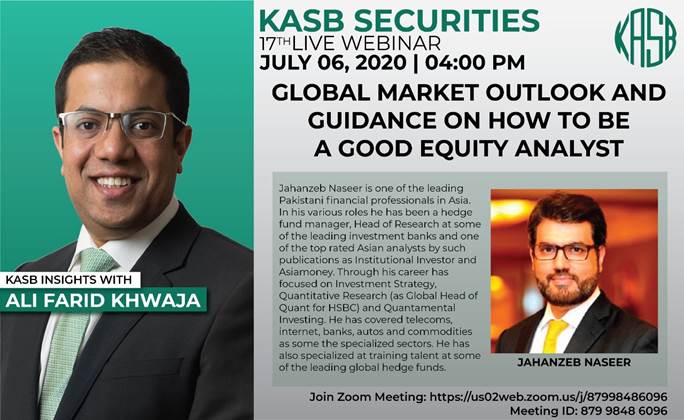- Each market cycle tends to be different. Trying to estimate the length of a bullish/bearish by averaging out past trends can be very distorting.
- The market prices represent a discounting mechanism, which is a combination of three things: future growth, the discount rate, and risk premium that the market is willing to give.
- The fact that equity markets are currently bullish, despite poor growth prospects, is testament to the notion that there are two other very important factors at play.
- More than 90% of companies have stopped guiding in Q2.
- Over the past few election cycles, the following factors have emerged as key trends: global trade, improving global productivity, and falling tax rates.
- During Trump’s tenure, 10% of earnings growth has come from tax cuts. Assuming that even half of that is upheld by the next government, that in and of itself represents a 5% hit to earnings.
- As we move further into the election cycle, we are likely to meet a higher trajectory of taxes – capital gains, corporate, and personal.
- However, there is cause for optimism because although earnings growth may be slowing down, the other two factors are very much in play and play a more important role in determining asset prices.
- The dislocation in the market that has been created as a result of the COVID-19 outbreak is somewhat worrisome. However, worry is a good thing in the markets. When the general sentiment seems to be that the markets are mispriced, one should generally be betting against the “magazine cover indicators”.
- Every bull and bear market is different; do not try to model the next cycle on the last one.
- June 2009, which was the last bull market, saw the slowest GDP growth in all expansionary cycles since 1947, but at the same time it has also been the longest-running bull market in the past 100 years. All of which is to say that although it might be difficult to have a bull market with no growth, but having low growth does not necessarily mean that you cannot have a sustained bull market.
- Since the turn of the century, the money supply has increased a lot faster than the nominal GDP, which has resulted in asset price increases and widening of the gap between household wealth and GDP.
- Dating back implied interest rates 5,000 years (based on records of various barter transactions from prehistoric times) reveals that interest rates have never been as low as they are right now. This is not normal, and as such, asset prices cannot be expected to behave normally either. So having higher valuations is actually very normal under the circumstances.
- We are moving towards localization, as opposed to globalization. Relocation to higher-cost-of-production areas will translate into lower profitability and slower economic growth.
- Historically, economic warfare has often preceded actual wars. So that needs to be built into any long-term models, and reflect higher volatility.
- How the trade war affects Pakistan will have a lot to do with how Pakistan chooses to play its cards. As of now Pakistan has sided with China, without having burned bridges with the US, however soon enough it may have to pick a side.
- Pakistan could take advantage of some of the supply-chain disruptions happening in China, especially in low-end labor-intensive industries.
- Broadly, it could serve Pakistan well, especially since the trade dependence on the US is fairly low. But there is a huge need as well as an opportunity to expand trade avenues within Asia.
- However, as things stand right now, Pakistan is not equipped to take over some of the higher value-added supply chains from China, which is really where the big opportunities lie.
- The Belt and Road Initiative (BRI) has taken a bit of a backseat to how the US-China trade war is currently unfolding, in terms of media coverage. But on the ground, there is no decrease in intensity with which China is still pursuing the project.
- Following on from the TikTok ban, it seems obvious that the Chinese investors into the tech sector in India will be looking for alternative markets. However, it is also fairly evident that India has that leverage in being one of the biggest potential consumer markets – that it could block/ban some of Chinese technologies as a retaliatory measure to military conflict. China would want to avoid such retaliation, especially given the facts that right now the US is also trying to block/ban a lot of Chinese technology as well, and currently there is no other market that can make up for the loss of presence in India.
- The reasons why markets trade at a premium or discount to each other are as follows:
- Growth Differentials – markets that have higher growth, tend to trade at a premium.
- Risk Perception – markets that have higher risk perception, will generally trade at a discount.
- Discount Rate – the level of prevalent interest rates in the markets.
- Of course government wants growth, but growth is an end-product of having stable policies, less interference in private enterprise, and fostering an environment that is conducive to investments coming in and people being entrepreneuralistic.
- Having consistency in policy-making is the best thing that the government can do to reduce risk perception.
- If you look at the US market, the top 5% of the companies are at an all-time high but if you look at some of the COVID-affected industries like retail and entertainment, they are still 50%-60% below their respective highs.
- There are forecasts suggesting that in the wake of the COVID-19 fallout, we will probably witness the biggest industrial slowdown since the Great Depression.
- Advice to prospective analysts: You have to be very inquisitive. Investment Analysis is actually a combination of three jobs:
- Journalist – you need to know the economic history and how the markets work.
- Accountant – you need to be able to read the companies’ books properly.
- Private detective – you need to be able to question things and look for answers, otherwise you are just reporting on facts.
- Every analyst is good in a different way. You have to be interested in markets. Like any other job – you have to be very passionate.
- Low interest rates will probably prevail for the rest of our lives. It will probably be a very long cycle. The levels of debt have reached such unprecedented heights that we cannot afford to raise interest rates. If interest rates go up now, the debt/interest burden in societies will go up to the point that it becomes unsustainable.
- Central Banks are now discovering that their ability to keep putting money into the market is almost unlimited.
- Japan has flipped the textbook theory on its head pretty much; in that, the Yen has not depreciated amid continuously rising levels of money supply into the economy. If the economy does not have a lot of external debt, this can be achieved.
- With regards to the US markets’ response to the COVID-19 situation, the markets reacted to a lockdown, not the virus. And now that the lockdown has been lifted, the reaction is probably going to be subdued. Death rate has continued to fall quite substantially. If that continues, the markets may not be too reactive to the COVID-19 episode.
- Generally, government regulation is probably going to increase because that goes hand in hand with ownership – which is exactly what financial stimuli from the government translate to.
- Even in the event of a Democrat victory in the 2020 US Presidential elections, the rhetoric on China is probably not going to be too different than what it is right now. However, in reality the tensions might ease a little as policies become more relaxed.
- Two things you should never forecast: oil and currency. Japan shows that more currency doesn’t always mean devaluation.
- Investment should be a repeatable process, much like a production line. It minimizes chances of mistakes, and allows you to learn from your mistakes at the same time.
- Prospective analysts should study financial history. They should look for precedence because by and large almost every economic situation has existed before in one shape or another.
- It is also a good idea for beginners in investment analysis to read up on seasoned investors’ philosophies, and just follow whoever resonates with them the most.
- Right now, making the wrong call on quantitative easing is the most significant way to lose money. Another place where you could make a costly wrong call these days is on the longevity of the COVID-19 episode; that is, if the virus stays for another couple of years, many of the businesses that have been dislocated will go bankrupt before they even have a chance of making a comeback.

